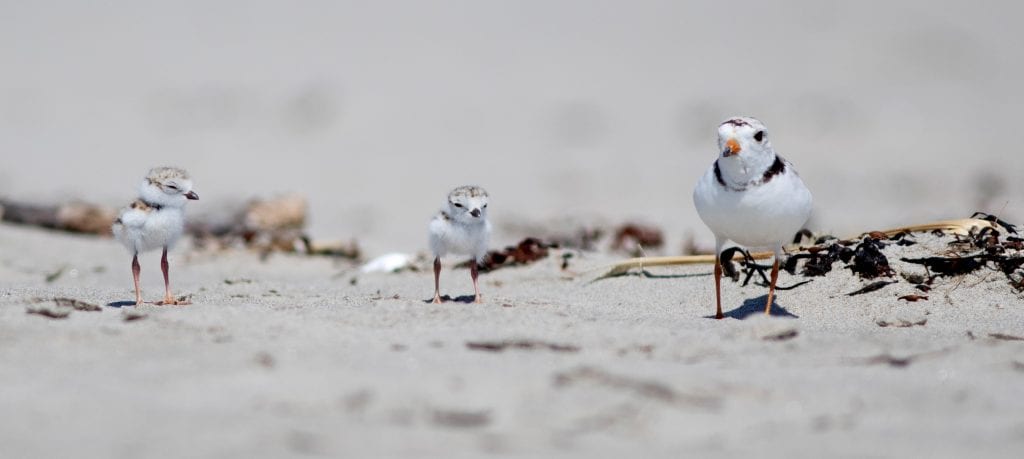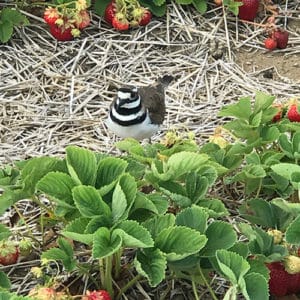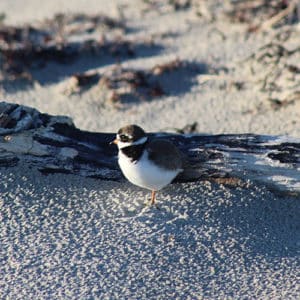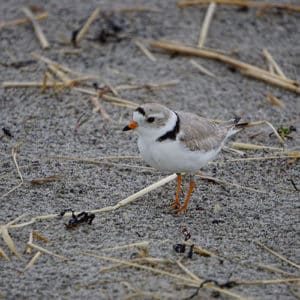
COMMONLY MISIDENTIFIED SPECIES: It’s not always easy to identify Maine’s most beloved birds. Maine Audubon biologists and naturalists commonly field identification questions along the lines of “is it this, or is it that?”. Many species look similar from a distance, but there are some great telltale signs, both visual markers and behaviors, that can help identify species. This is an occasional series to try to help you know what you are looking at!
Plovers are shorebirds that are small, move fast, and blend in easily with their surroundings.
Three plovers in the genus Charadrius are regularly seen in Maine: Piping Plover (C. melodus), Semipalmated Plover (C. semipalmatus), and Killdeer (C. vociferus).

Killdeer are the largest, darkest, and most common of the three, and are most often found in open landscapes like parking lots, ballfields, and lawns. If you see a plover away from water, it is most likely a Killdeer. They often emit a high-pitched “teeeee dee dee” call when alarmed, and will perform an unmistakable distraction display when threatened, with a looping flight away from the nest or young, sometimes feigning a broken wing. All but the youngest Killdeer can be visually distinguished by two dark breast bands (young that are still downy only show one breast band, but look for double-banded adults nearby), as well as their pinkish-tan legs.

The other two plovers are smaller than Killdeer, and are nearly always found on beaches. The type of beach that you are on can be one identification clue: Semipalmated Plovers generally frequent rockier beaches, while Piping Plovers are almost always found on open sandy beaches. Semipalmated Plovers are more likely to forage at the waterline with other shorebirds, and generally are found in groups, whereas Piping Plovers do not generally mix with other shorebirds, and are usually seen individually or in small groups. On most sandy beaches in Maine, the most obvious clue to the presence of Piping Plovers is the large metal nest enclosures and roped-off areas managed by Maine Audubon conservation teams: if you spend enough time looking carefully (and respectfully) into these areas, you are likely to see Piping Plovers running among the dunes. This can be another clue: Semipalmated Plovers do not breed in Maine, so if you see a small plover with young, it is a Piping Plover.

Visually, the easiest way to distinguish between Piping and Semipalmated Plover is the color of their upper feathers: Piping Plovers are a pale tan, with a light and narrow breast band, while Semipalmated Plovers are a darker brown, with a single, dark breast band. Adult Piping Plovers in breeding plumage have a thinner dark breast band that usually doesn’t connect to form a complete band, and is much paler (sandy) in all other plumages. These plumage differences reflect the aforementioned habitat differences between the two species: Piping Plovers are the color of the sandy beaches they frequent, while Semipalmated Plovers are the color of the rocky beaches and mudflats they frequent.
Learn more about the Least Tern and Piping Plover Project here. If you are interested in helping out on the beaches with the Coastal Bird Crew, email conserve@maineaudubon.org.
